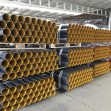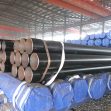Fire Curtain Wall Applications
When it comes to fire safety, is it important to consider both methods for the prevention and for the control of a fire within a building.

WHY DOES A BUILDING NEED FIRE CURTAIN WALL?
In large commercial premises, there are multiple challenges when it comes to building compartmentation and passive fire protection. With the rise in popularity of open-plan layouts, it has become increasingly impossible to utilise fire doors, due to the lack of walls. Therefore, a great alternative to fire doors is the use of curtain walls, as they can offer the same levels of fire resistance and smoke control. Fire curtain walls can be set within the ceiling and walls, or face fixed depending on the building requirements. They will then sit in place and remain hidden, always ready to drop when needed in a fire situation due to their gravity fail-to-safe operations, even when all areas of power are not available for consumption.
BENEFITS OF FIRE CURTAIN WALL
Fire curtain walls have been developed to be able to work with modern building structures and architectural designs. Meanwhile, in-built fire barriers are included in building design to prevent the spread of flames and smoke, in order to reduce the risk to occupant safety. In most cases, fire rated curtain wall can be used to replace a non-load bearing wall and fire rated glazing, which in turn allows open plan building designs to meet the relevant regulations. Similarly, elevators and lobbies can be protected by vertical curtains, which prevent the spread of smoke and flames through the shaft. In addition, the proper installation of fire curtain wall can also provide further benefits. For instance, because they deploy automatically they are a safer alternative to manual methods of combating fire and smoke which require the user to come into close contact to control or indeed extinguish the spread. In addition, fire-resistant curtain walls serve three main purposes in a building: to limit the initial development of a fire; to prevent the spread of fire; and to protect escape routes. An effectively fitted fire curtain can help to suppress the growth and development of a fire and smoke within a building.
WHAT ARE THE PURPOSES OF FIRE CURTAIN WALL?
Fire curtain walls tend to decrease levels of smoke and fire before they can spread further throughout a section of the curtain wall buildings. They are typically lightweight and rarely need additional support when being installed, meaning that the inclusion of a fire curtain rarely changes the design of a building. On the other hand, installing fire curtains into a building’s design separates the space into individual compartments. With the increasing rise in popularity of open-plan layouts, it has become increasingly difficult, if not impossible, to incorporate fire doors where there is a lack of wall space. Fire curtains can be installed in almost any space.
WHERE ARE FIRE CURTAIN WALL INSTALLED?
In most cases, fire curtain walls have minimal limitations when it comes to installation. Fire curtain wall can be used to allow open plan building designs to still meet fire regulations. Areas where there are stairs and lifts or lobbies, which are arguably the most critical escape routes, can employ fire curtain wall to help control smoke and prevent smoke from spreading through the staircase and lift shafts. With the support of intricate testing, modern curtain wall design can withstand the heat and effects of a fire for longer periods.
Tel: +86 18202256900 Email: steel@fwssteel.com
Previous: Fire Curtain Wall Maintenance










